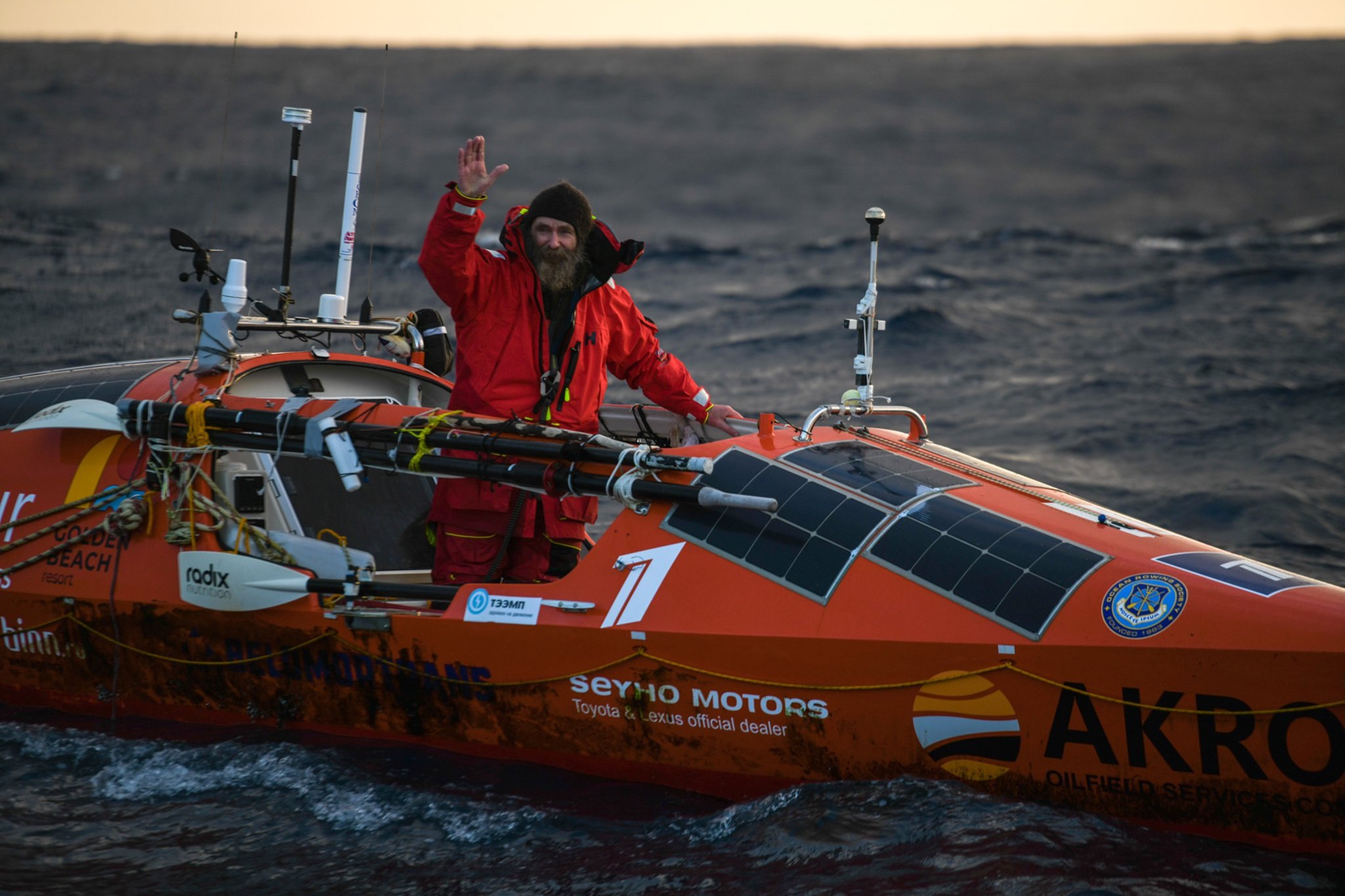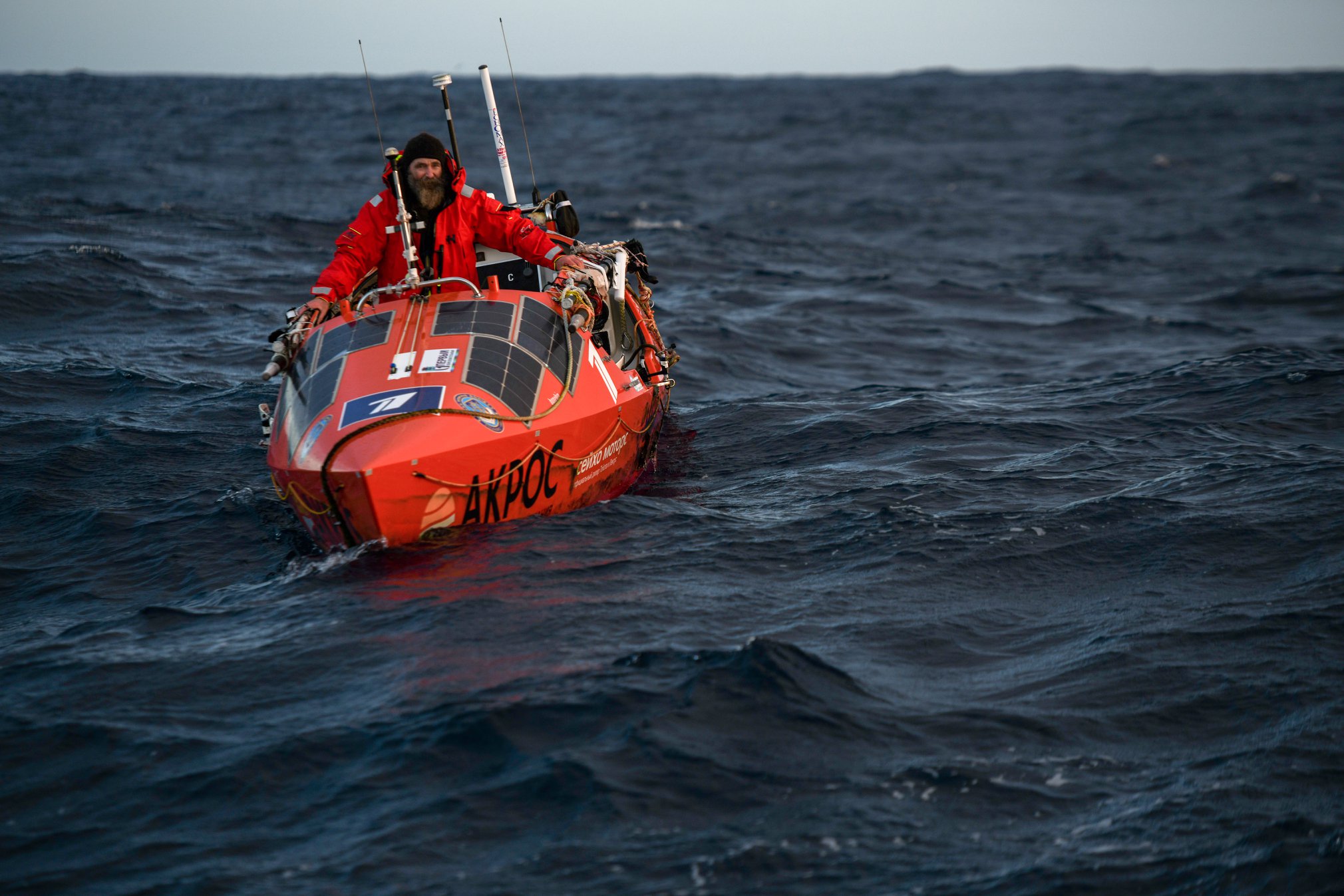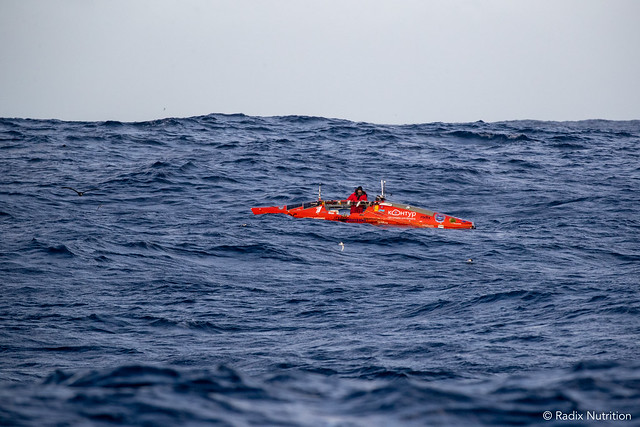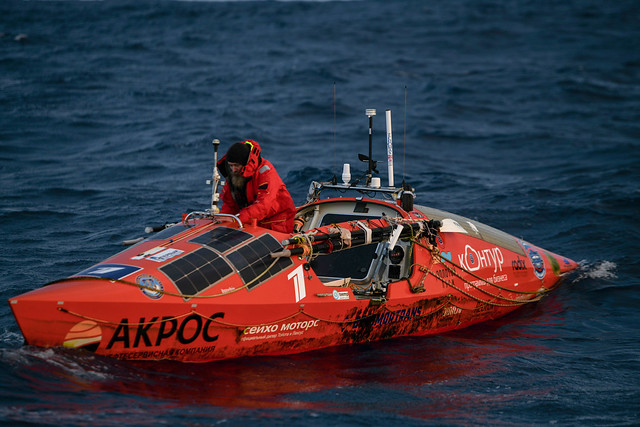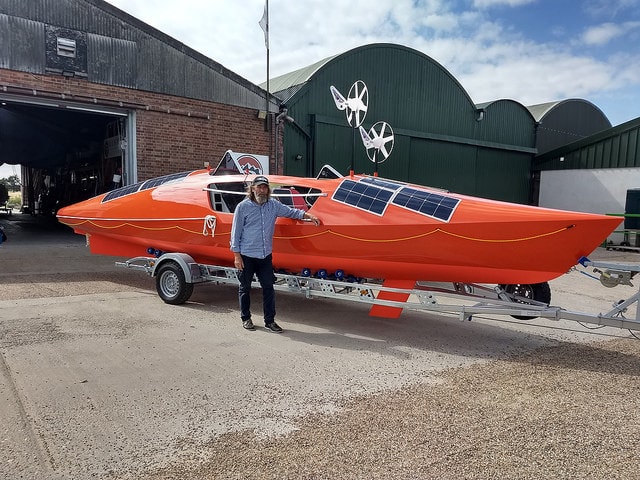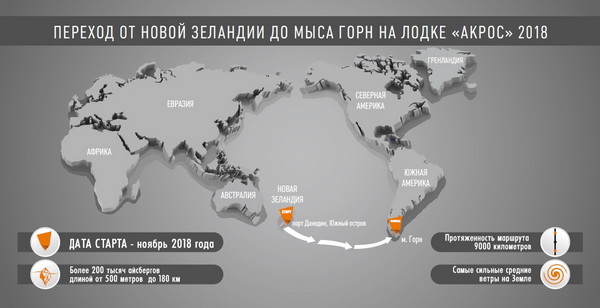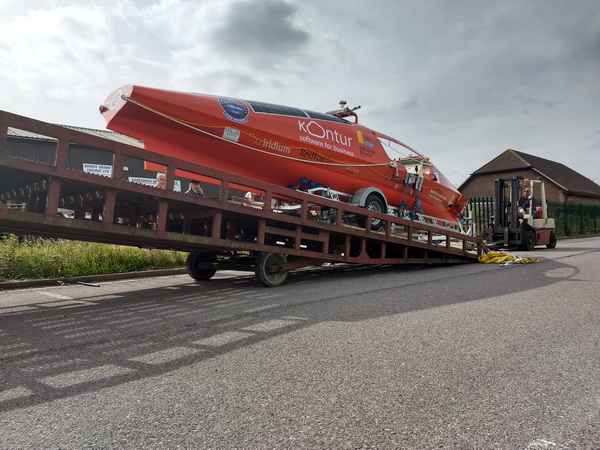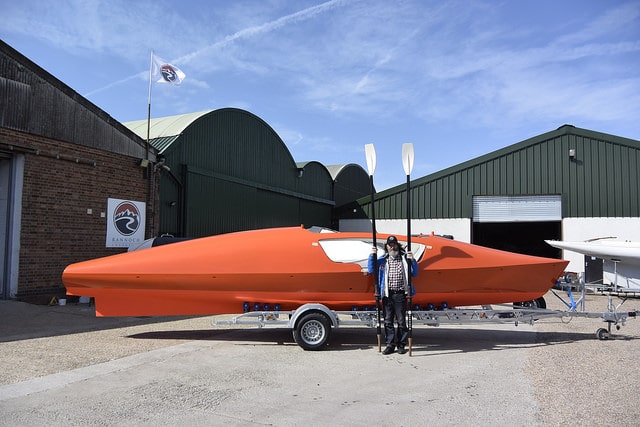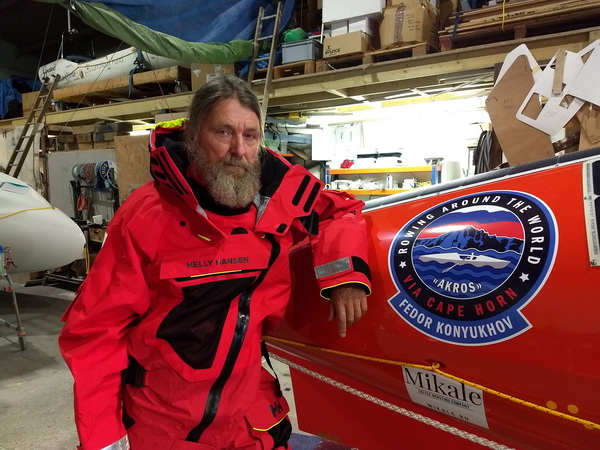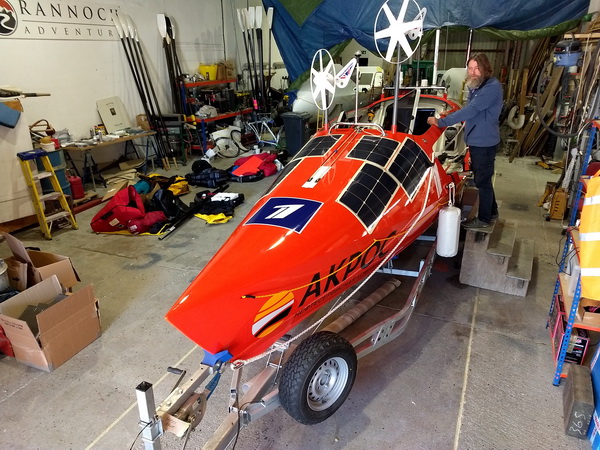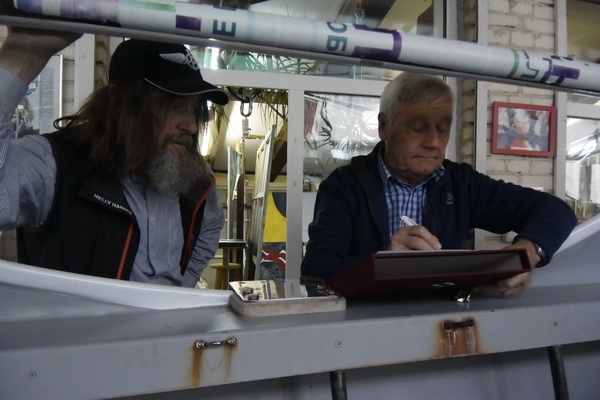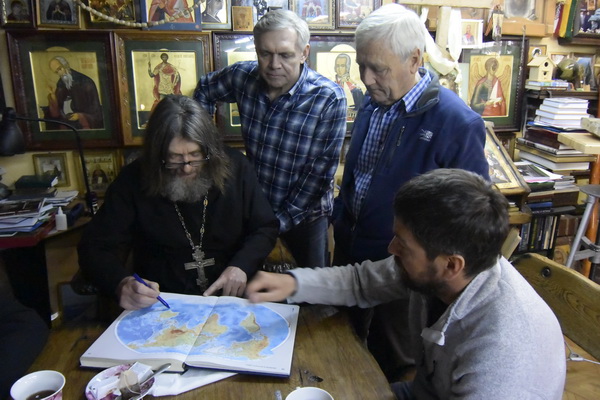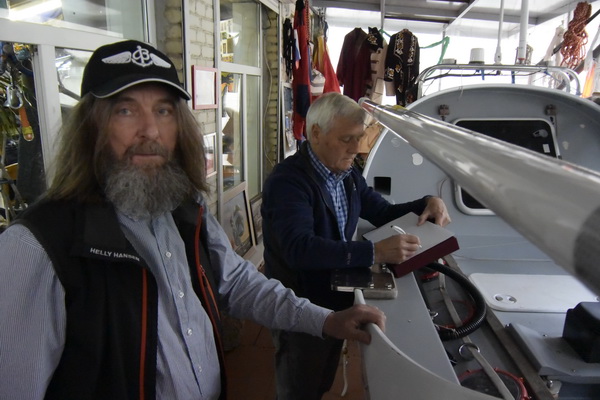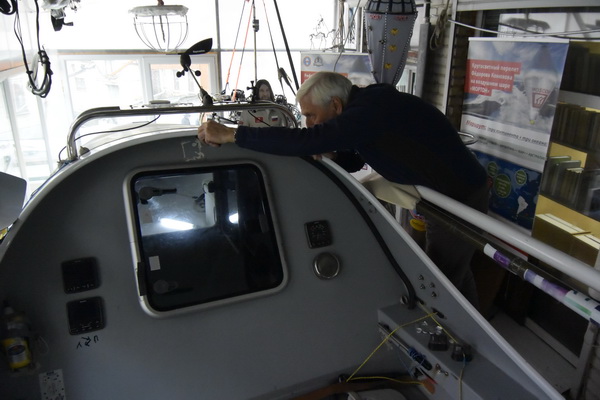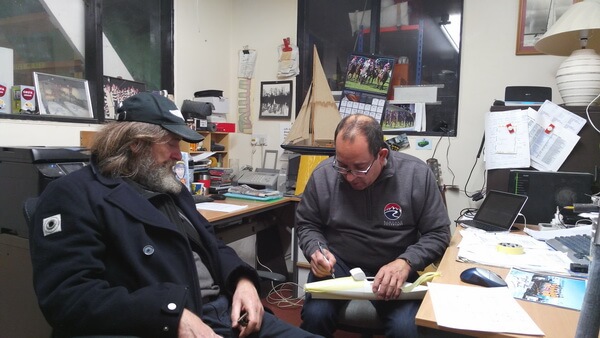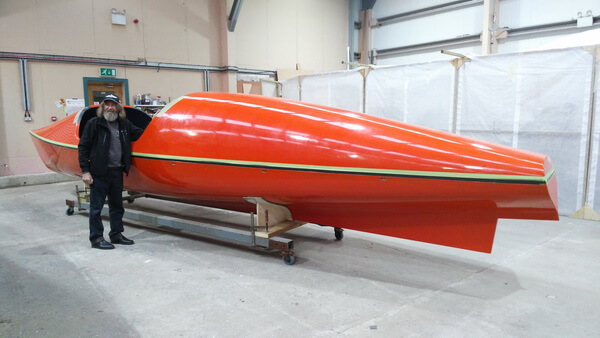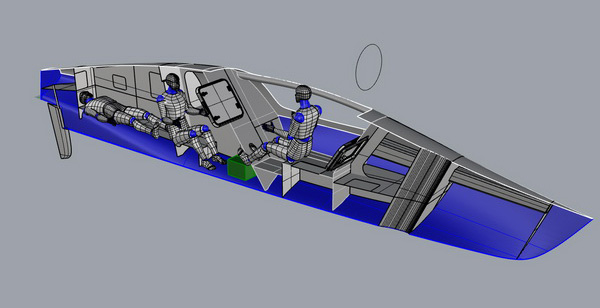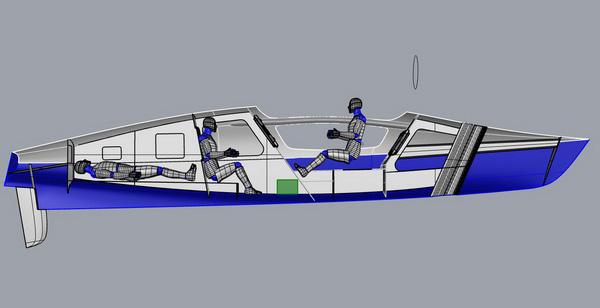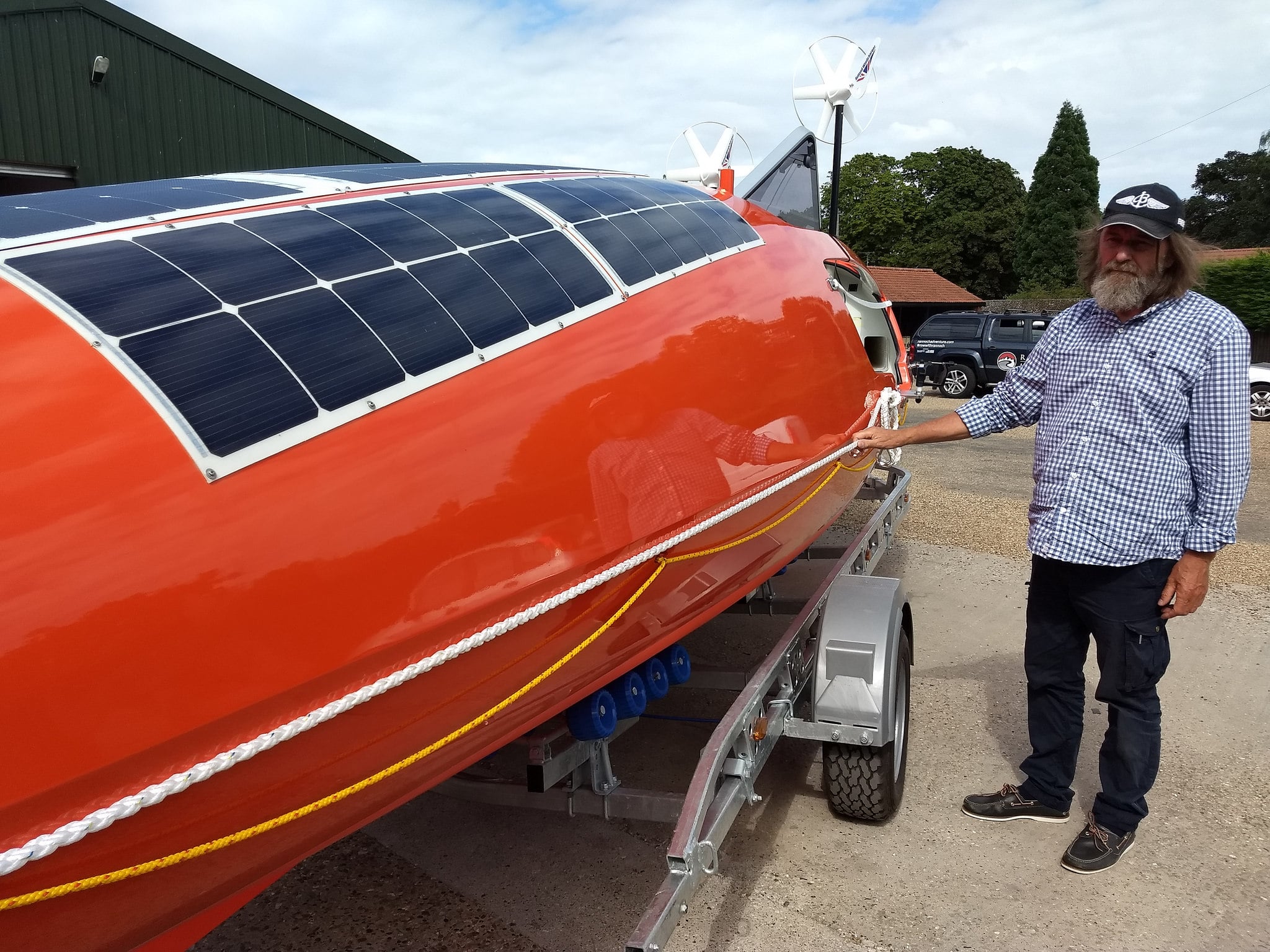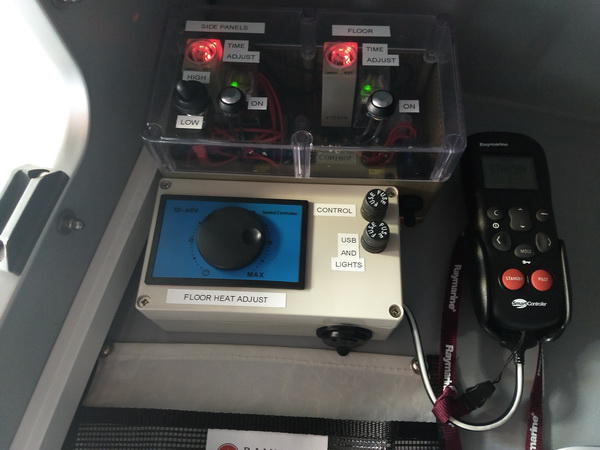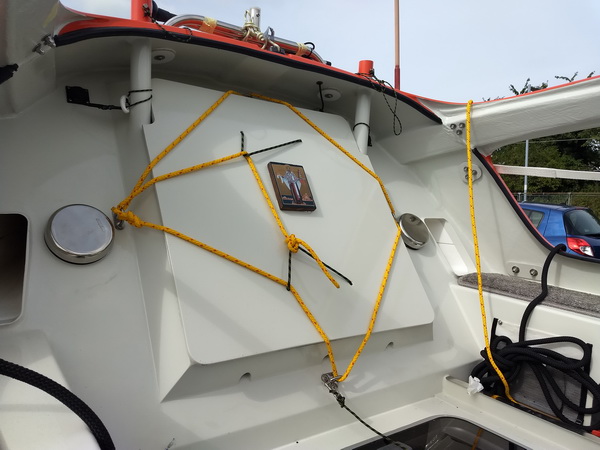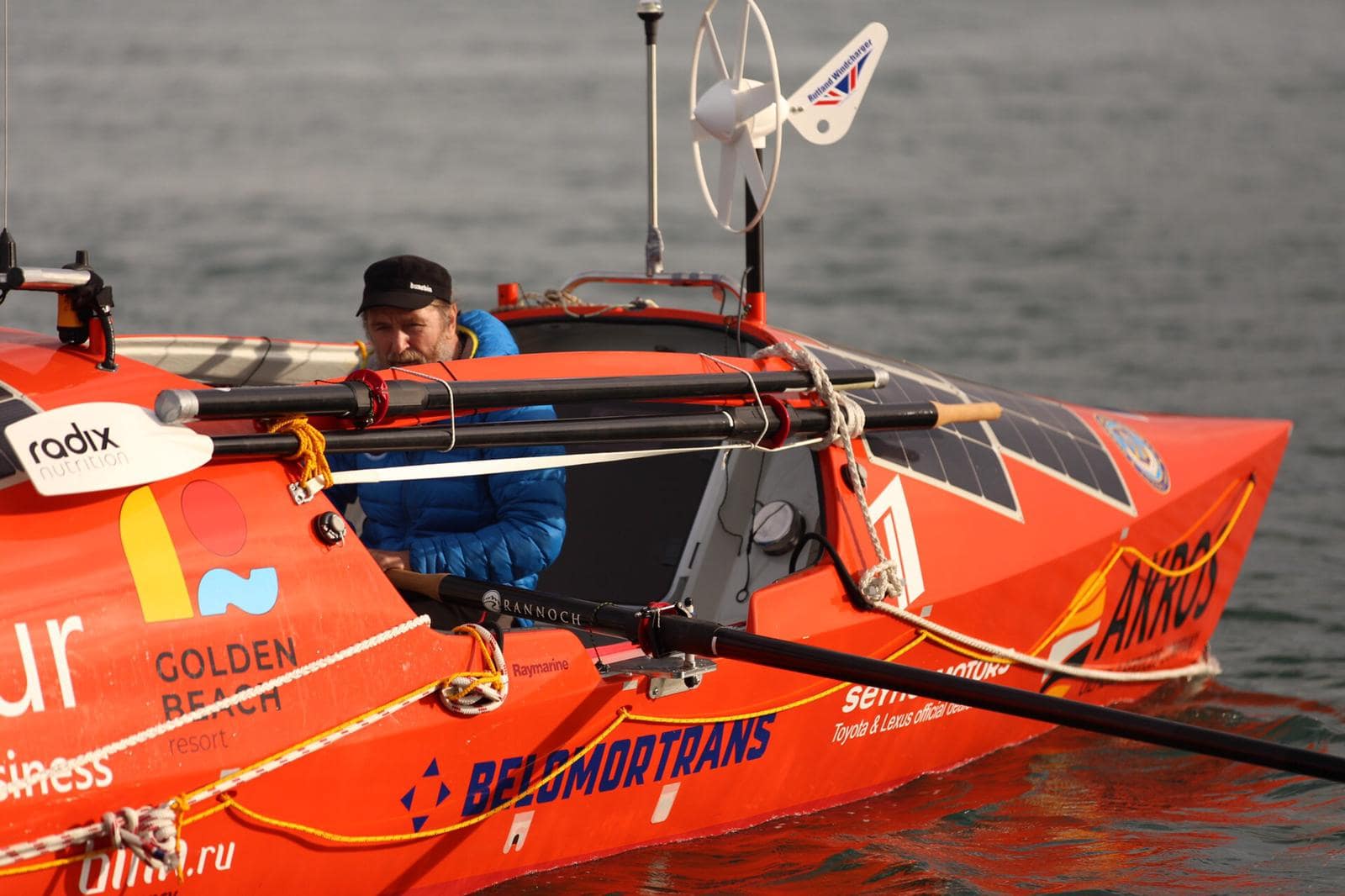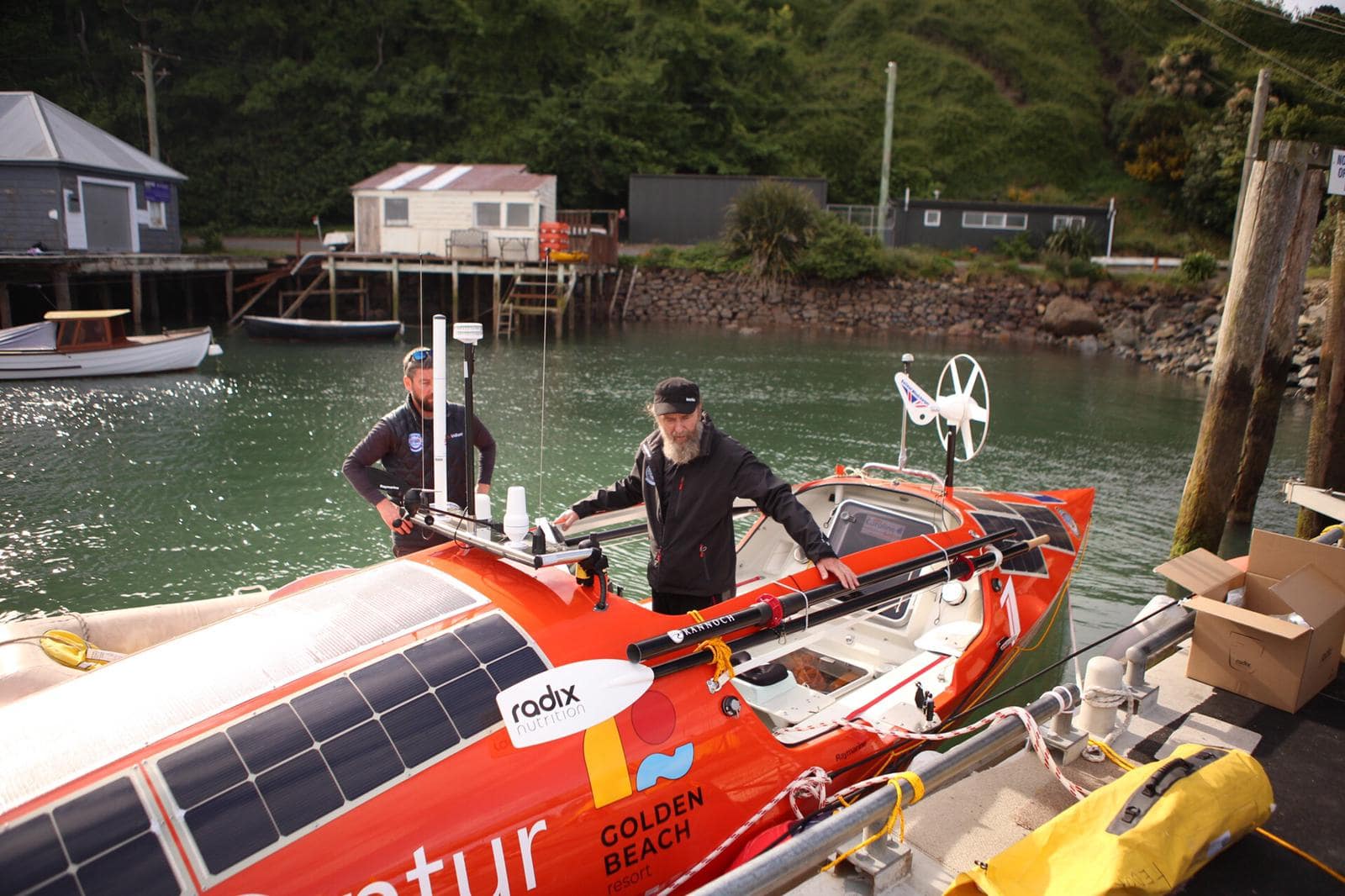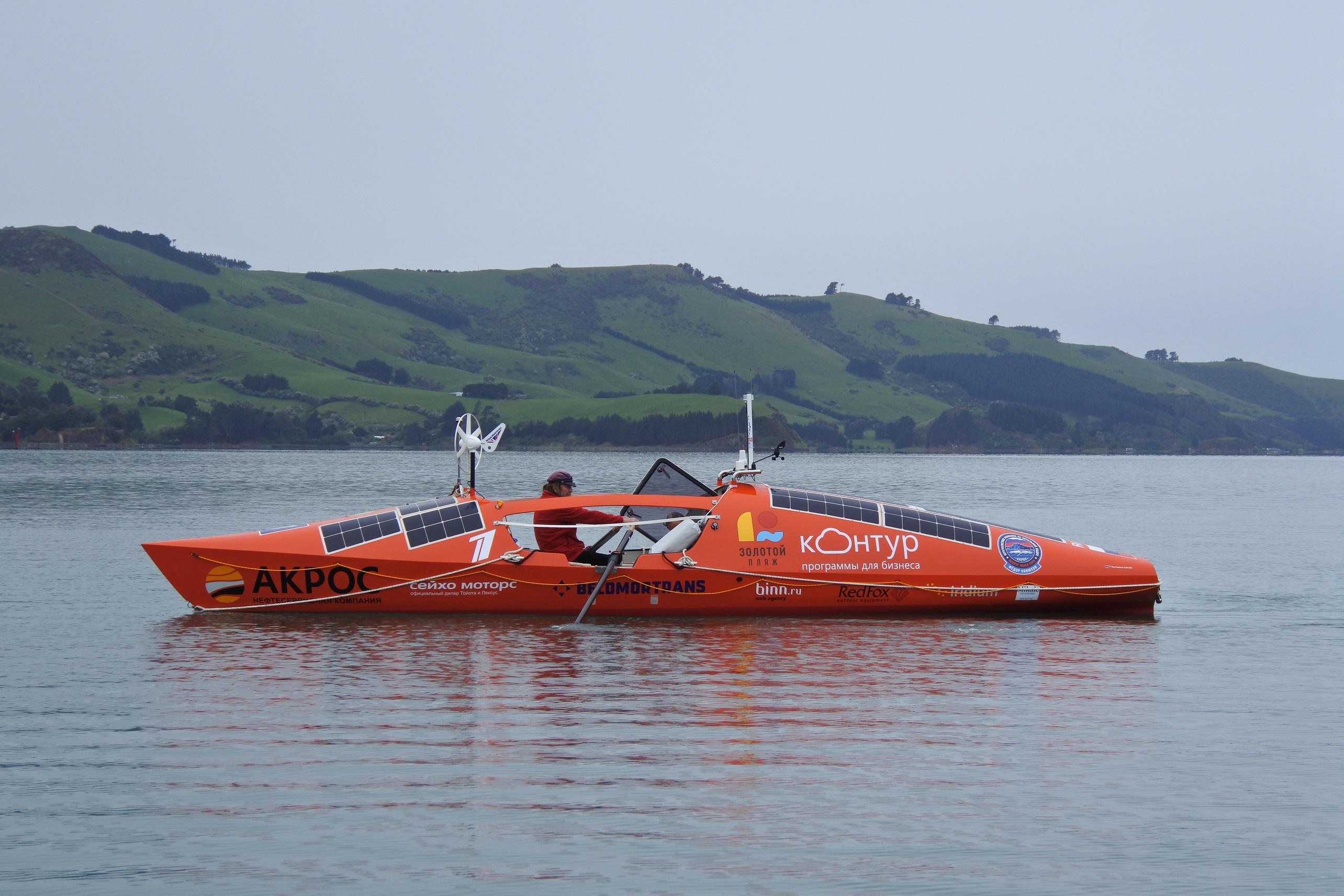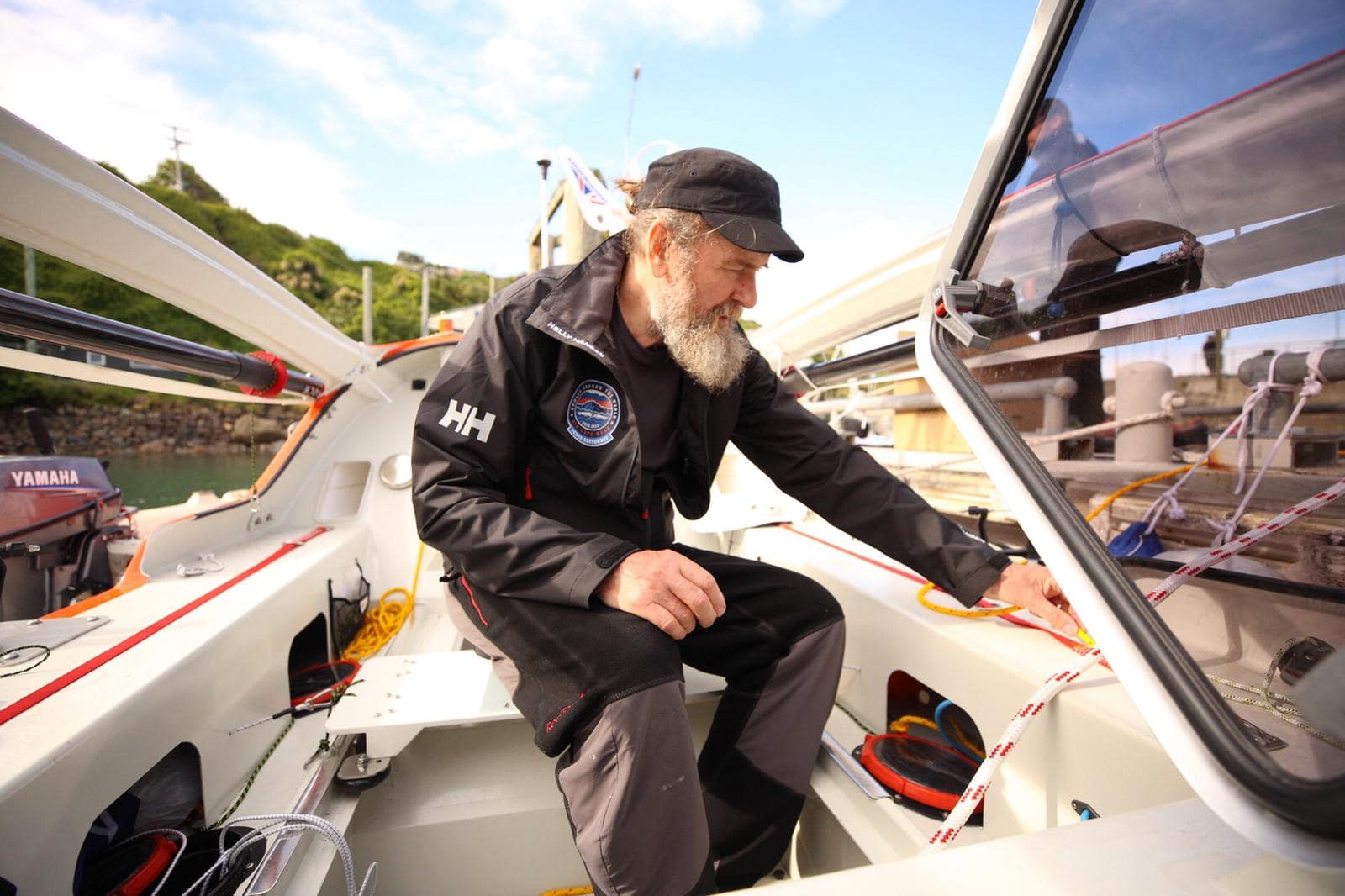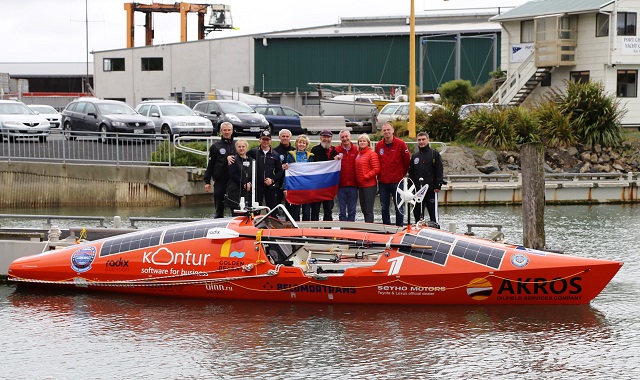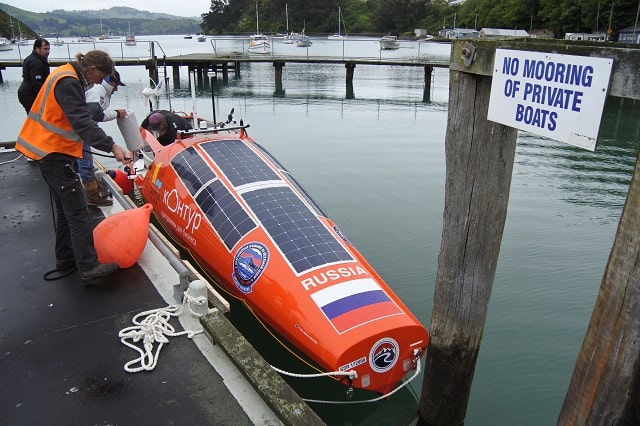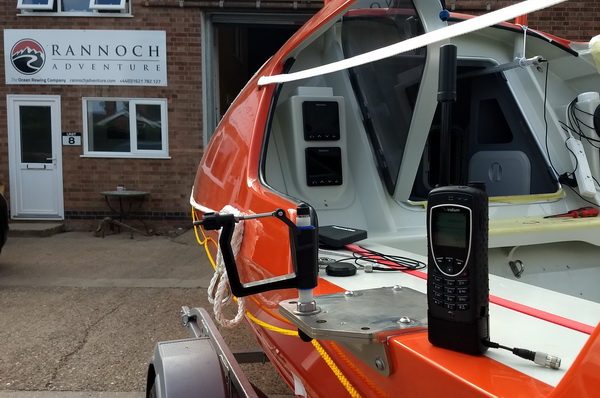-
17 monthsPreparation time for the Expedition
-
Approximately 120 daysLength of each stage
-
27,000 kmTotal round the world route distance
In 2018 and 2020, Fedor Konyuknov plans to complete a solo circumnavigation of the Southern Hemisphere on the ocean rowboat “AKROS”. The expedition will take place in three stages each beginning in the Southern Hemisphere’s summer months. Stage one starts in November 2018 and covers the distance from New Zealand’s port city of Dunedin to Cape Horn in Chile. Stage 2 will begin in December 2019 from Chile’s Cape Horn, ending at Australia’s Cape Leeuwin in Albany, WA. The final Stage, in 2020, will be from Australia to New Zealand. It is possible that different finish points will be chosen along the route depending on weather conditions.
To date, no successful rowboat attempt has been made to cross the Southern Ocean and round Cape Horn in the history of oceanic rowboat expeditions.
The cyclonic motion of storms travelling eastwards around the continent of Antarctica often grows very intense due to the contrast in temperature between the ice and open ocean. The most powerful mean winds on Earth are found in that oceanic region below the latitude of 40 degrees south. In winter, the Pacific Ocean freezes up to 65 degrees south latitude, and the Atlantic freezes up to the latitude of 55 degrees south, sending surface temperatures well below 0°C. At the same time, at some coastal points, relentless, powerful winds strip the coastline bare of ice throughout winter.
Icebergs can be encountered at any point during the year in the Southern Ocean. Some of them can be as large as several hundred metres in size. Smaller icebergs, their fragments and sea ice (usually between 0.5 to 1 m thick) also present danger to seafarers. Icebergs in the Southern Ocean are usually 6-15 years old, suggesting that at any given time more than 200,000 icebergs can be found in the ocean waters, many of which are between 500 metres and 180km long, and up to several dozen kilometres wide.
Since the sailing vessels era, the Southern latitudes between 40 and 60 degrees have been known to sailors as the “Roaring Forties” and “Furious Fifties” due to poor weather, storm-force winds and enormous waves created by the air currents circulating, unimpeded by any significant land mass, around that part of the globe. Floating ice, particularly from May to October, make this area all the more dangerous, while its isolation from populated regions makes search and rescue operations very difficult to organise.
Survival in such conditions can be achieved only on a specially designed vessel. British designer Phil Morrison has been commissioned to build this new rowboat. Phil designed Fedor’s rowing boat “URALAZ”, which Fedor piloted across the Atlantic in a record 46 days, and another rowboat named the “TURGOYAK” or “K9”, on which Fedor crossed the Pacific Ocean from Chile (ConCon) to Australia (Mooloolaba) in 160 days.
Phil proposed using the same design and bodylines of the “TURGOYAK”, modified for the conditions of traversing of the Southern Ocean. The size of the boat remained the same, staying at 9 metres. The bow of the boat will contain a “crush box” and is divided into two watertight compartments, where the 200 days’ worth- of provisions and equipment will be stored. The cockpit was reduced to be as small as possible in order to minimise risk to the rower in being washed away by large waves. The aft section has been enlarged by half a metre (at the expense of the cockpit) and has three watertight partitions. The aft section contains a navigation room (on the starboard), a kitchen (on the portside), with the remaining compartment being for rest. The compartment where the steering gear and autopilot can be found is also separated by a watertight bulkhead.
On board, there are three independent power generation systems.
A new product was developed by a Russian company “TEEMP” – flexible solar power modules with a power coefficient of 22% efficiency. We have never had such efficient solar batteries on board before. Fedor Konyukhov will run a series of tests and experiments with these panels along his journey through the Southern latitudes. Similar solar power modules to be installed on the plane used for project “Albatross” – a non-stop solar-powered flight around the world.
There are also two Rutland 504 wind turbines installed on the boat. One primary and the other in reserve.
Fedor Konyukhov will also for the first time use EFOY fuel cell power plant adapted for an ocean-going rowboat. It works according to the following principle: an electrochemical reaction takes place on the proton-exchange membrane of hydrogen, contained in methanol with oxygen, found in the air. This reaction creates free electrons, thereby generating an electric current. By-products of this chemical reaction are carbon dioxide and water. Methanol cartridges are used as fuel.
This project has a much higher power to weight ratio compared to the crossing of the Pacific Ocean in 2013.
The rowboat was built in England by Rannoch Adventure.
The specialists at this company developed floor-warming systems in the rest cabin. Fedor Konyukhov can set a timer on a thermostat for up to one hour, to warm his sleeping area in a similar way to how floor heating works in homes. This setup requires some serious power supply, which is why the “AKROS” needs three independent sources of energy (wind, solar, and fuel cells).
The “AKROS” will have on board two satellite phones from Iridium, a stationary phone and an Iridium Go. The latter gave a very good account of itself throughout the hot air balloon circumnavigation, due to its capabilities including sending SMS messages from a smartphone (via satellite connection), and ability to transmit large amounts of information, including weather forecasts. It will be possible to track the expedition using an interactive map of the route using Iridium 360 and the tracking system Iridium 360 RockStar.
Other equipment traditionally found on any modern yacht will include: a chart plotter, an AIS radio station, several GPS systems with different power supplies. The boat is equipped with several backup communication and navigation systems.
Fedor Konyukhov is going to start his journey from the New Zealand port city of Dunedin. The city is situated on the South Island’s East coast, at 45 degrees south latitude. The start is set for the second half of November, 2018. After launch, the boat will begin the longest stage of its circumnavigation expedition, setting a course east and south-east, through the Pacific Ocean towards Cape Horn.
The length of the first stage will be approximately 5,500 nautical miles, with the length of the entire journey being 16 thousand nautical miles, or 27 thousand kilometres. Fedor Konyukhov expects to complete each stage during the three summer months of December, January, and February.
In 2007, Fedor Konyukhov traversed this very route when circumnavigating Antarctica on the yacht “Alye Parusa” (Scarlet Sails). At that time, he entered no port and completed the journey in 102 days.
The Southern Ocean (also known as the ‘Antarctic Ocean’), is the conventional name for the waters of three oceans – the Pacific, Atlantic, and Indian, encircling Antarctica to form a kind of “fifth ocean”, which lacks any clear Northern boundary in the form of islands or continents.
Record-setting Russian adventurer ready to embark from Dunedin for his next big journey. TVNZ
Roaring Forties beckon intrepid adventurer. Otago Daily Times
Fedor Konyukhov: The World’s Busiest Adventurer Begins His Latest Expedition. ExplorersWeb
Record-breaking Russian priest to circumnavigate world in rowing boat. SBS
Into the wild blue yonder. Otago Daily Times
Sea the place to be on birthday. Otago Daily Times
Russian Orthodox priest Fedor Konyukhov answers call of the wild again in a rowing boat. The Times
Five Solo Rowers Take to the Seas. ExplorersWeb
Fedor Konyukhov Reaches the Oceanic Pole of Inaccessibility. Radix Journal
Russian rower nears halfway point on journey to Cape Horn. Otago Daily Times
Armada se contactó con kayakista ruso que ingresó remando a Chile. www.armada.cl
Russian rower completes journey from Port Chalmers to Cape Horn. Otago Daily Times
Fedor Konyukhov, ciudadano ruso que vienen remando en su bote desde #NuevaZelanda a Chile, estableció comunicación con la dotación del avión de exploración aeromarítima de la III Zona Naval, aposentada en #PuntaArenas @Konyukh @emol @Cooperativa @mindefchile @EmbRusChile pic.twitter.com/7cSvppU5TJ
— Armada de Chile (@Armada_Chile) May 10, 2019
Russian Traveller 1st Man to Cross South of Pacific Ocean on ROWBOAT. Sputniknews.com
Fyodor Konyohkov Completes South Pacific Crossing. Explorersweb
Dunedin to Cape Horn in 154 days: Russian solo adventurer rows 11,525km through South Pacific. NZHERALD.co.nz
RT conoce la historia del viajero ruso que batió 20 récords mundiales. RT
Ruso que remó desde Nueva Zelanda hasta el Cabo de Hornos en 154 días: “Sólo con la ayuda de Dios puedes cruzar el Océano Austral en este bote”. Gobernacionantartica.gov.cl
Explorador ruso llega a Chile y completa viaje por el Pacífico Sur en 154 días. Publimetro
